Handwritten notes can be a more personal option than typing, though they can be slower and harder to organize. How can we get the best of both worlds?
by Justin Baeder, PhD
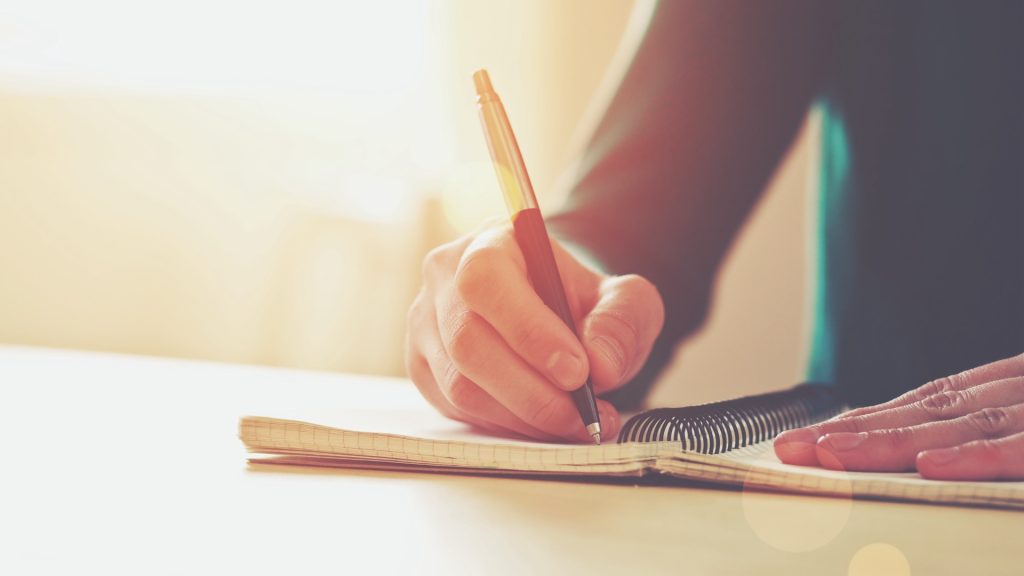
There's just something special about using pen and paper for notes when you're in the classroom:
- Technology doesn't come between you and the teacher and students
- There's no distracting click-clack as you type, and no email or other apps to distract you
- Handwritten notes are more personal than an email or form
If you prefer to take handwritten observation and walkthrough notes—or to leave handwritten notes for teachers—you know what I mean.
Handwriting just feels warmer and more humane.
The Power of Positive Handwritten Notes
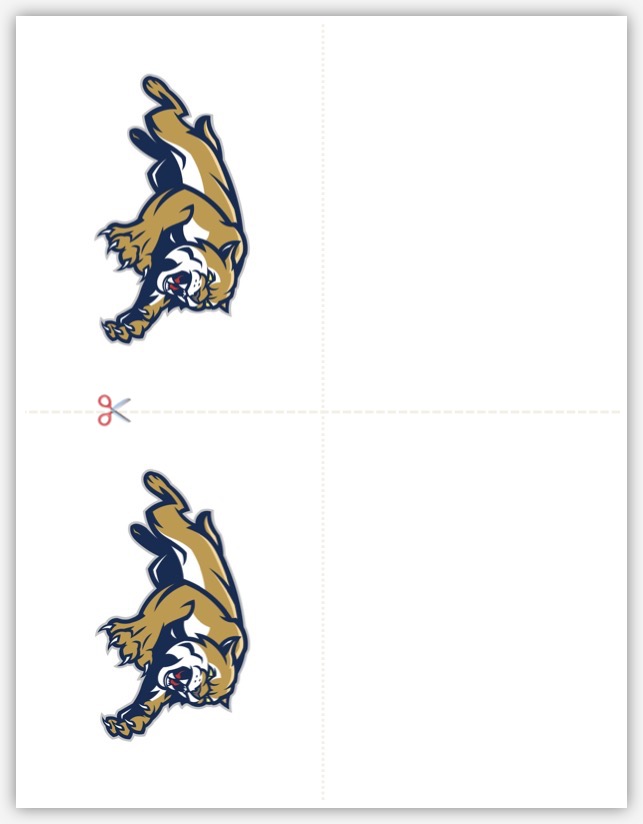
Teachers often treasure handwritten notes they receive from instructional leaders, proudly displaying them around their desks and keeping them year after year.
Here are some phrases you can use in friendly, handwritten notes to teachers:
- It was a pleasure to stop by your class today!
- Great to see your students hard at work today!
- Always great to see students so engaged in their learning!
Teachers always appreciate a kind word.
But handwritten notes are NOT a great format for getting into substantive feedback.
Here are three recommendations to help you avoid common pitfalls in handwritten notes:
- Skip The Feedback Sandwich
The Compliment / Suggestion / Compliment format doesn't work—neither in face-to-face feedback conversations nor in writing—so it's best avoided. - Don't Ask Reflective Questions
A handwritten note should just be an encouragement, not a homework assignment for the teacher.
Teachers often feel compelled to respond at length, even if your intent is just to spark reflection. Save questions for face-to-face conversations. - Don't Criticize
The goal here is not to find fault—just focus on the positives.
If you can't, and need to give a directive, do so in person, not in writing.
With these tips in mind, just go!
Simply grab a stack of notecards and get into classrooms. The impact on your relationships with teachers and overall school culture will be well worth the time and effort.
Saving Your Handwritten Notes
Handwritten notes feel better and more humane, but compared to electronic notes, they're less convenient after the fact, when you need to review and organize them.
As a principal in the late 2000s, if I wanted to keep a copy of a handwritten note, I'd have to run to the office and use the photocopier before giving it to the teacher. Then, I could file the photocopy in a folder with the teacher's name, or perhaps put them all in a single folder.
As the 2010s rolled around, smartphone cameras became a reality, so I could just take a photo before leaving the classroom—though the quality wasn't what it is today. Here's a note I left for a teacher in 2011, taken on my iPhone 3GS:
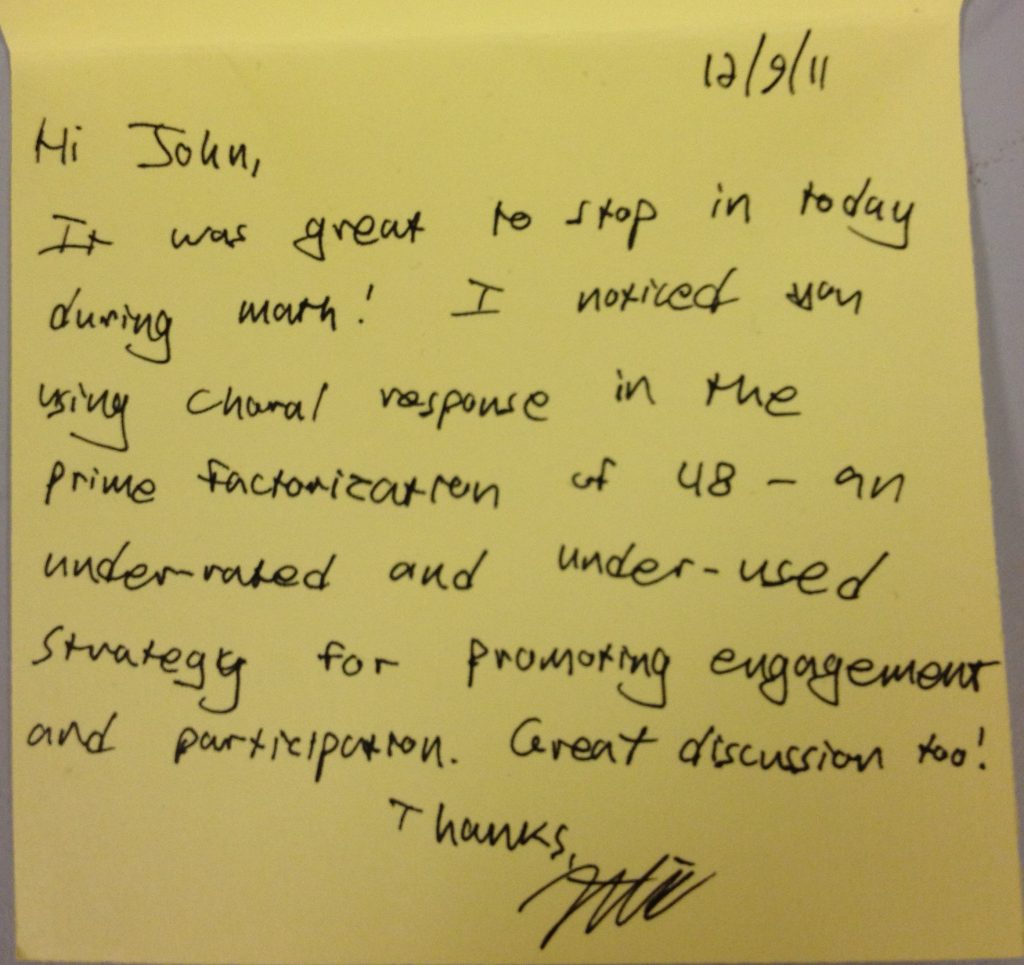
Some further tips for what to include in a handwritten note, based on this example:
- Express warmth and personal regard
- Cite something specific you observed, in a bit of detail
- Say something nice about what you saw
Today's phones and tablets have much better cameras that can take sharp, high-resolution photos. But those photos shouldn't stay in your camera roll.
Digitizing & Organizing Handwritten Notes
You may not find it necessary to save a copy of every handwritten note you leave for a teacher. If you're just saying something nice, and don't need any kind of formal documentation, it's fine to just leave the note for the teacher without saving a copy.
But if you're doing formal observations, or if you need documentation of informal visits, organizing your notes is essential.
The best way to organize classroom observation notes is in my app Repertoire.
I uploaded the 2011 photo above to Repertoire, and here's what it produced:
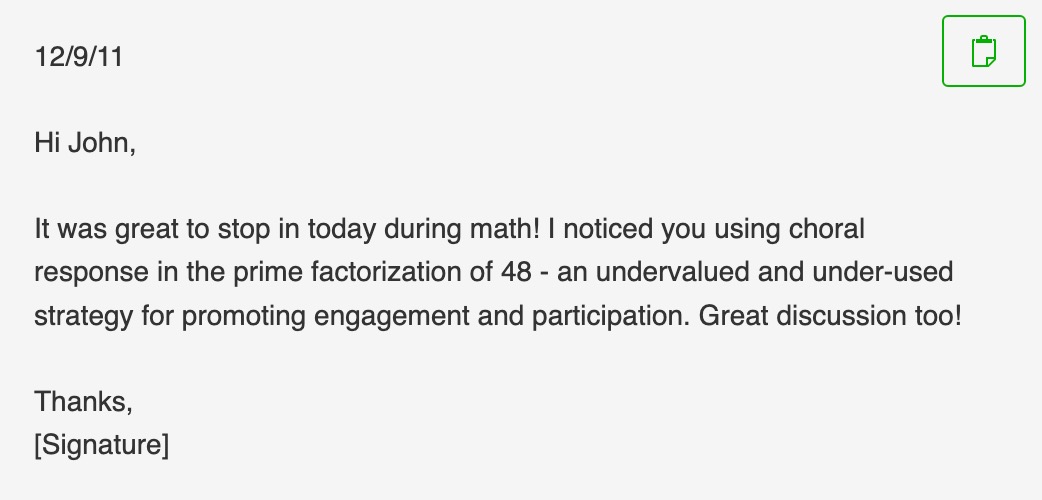
As you can see, this transcript is 100% accurate—not always a guarantee with my handwriting, and certainly my signature is illegible to human and machine alike.
But even at less-than-perfect accuracy, converting handwriting into text allows:
- Organizing notes into a spreadsheet by teacher
- Searching for keywords
- Copying and pasting into other documents and apps
All of this is helpful for positive handwritten notes, but game-changing for longer formal observation notes.
Handwritten Formal Observation Notes
For decades, school leaders have taken handwritten formal observation notes:
- On legal pads
- In composition notebooks
- On planner pages
- On paper forms
But they can't just stay in a notebook or on scattered sheets of paper—they need to be cleaned up and organized. So typically, these handwritten notes are used to prepare typed notes or complete an observation report that serves as the official record.
Typing up observation notes yourself is time-consuming and tedious—often a “homework” task that takes as long as the observation itself.
Thankfully, Repertoire can eliminate all of this manual work—simply take notes in your preferred format, and let Repertoire digitize them.
Compare this page of handwritten notes to the transcribed version below:
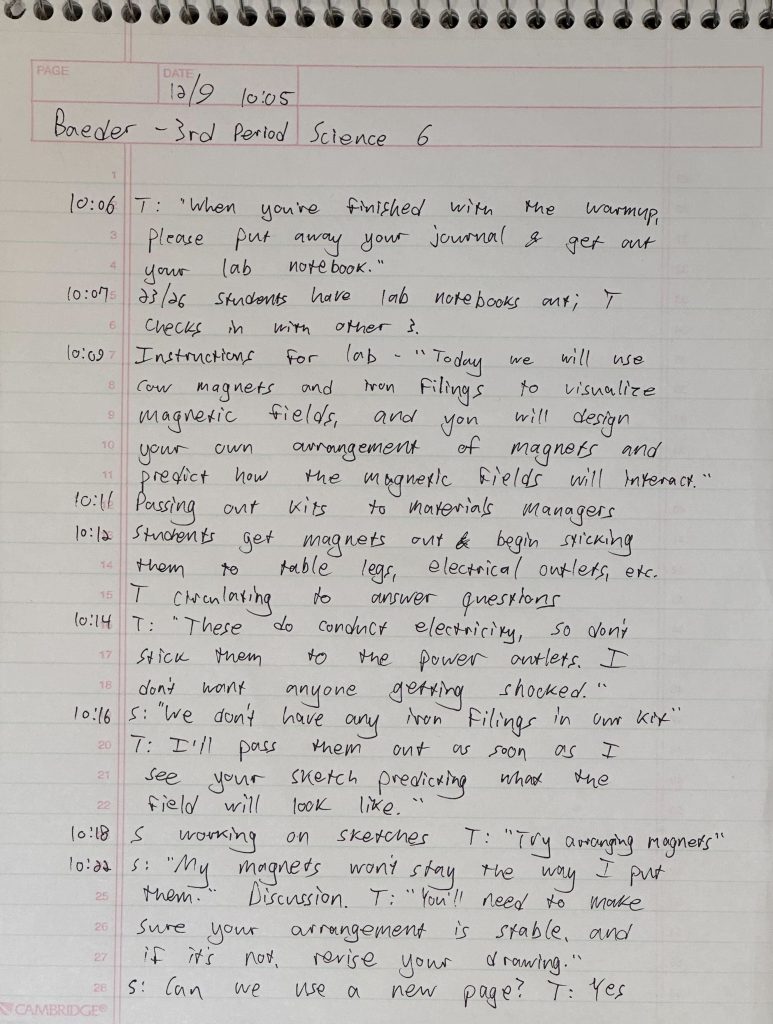
Repertoire's built-in ChatGPT prompt will transcribe your notes verbatim. Here's the actual output:
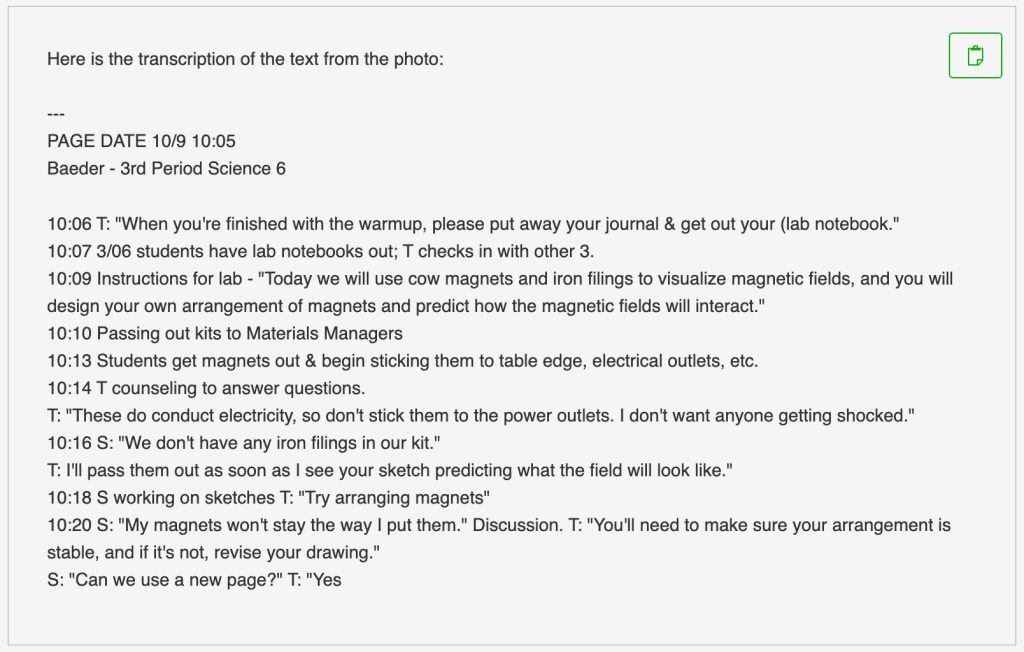
It'll summarize them, too:


Ready to eliminate the chore of typing up your handwritten notes?
You can try Repertoire for free here.
